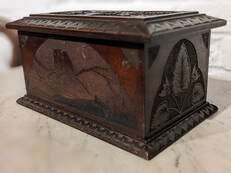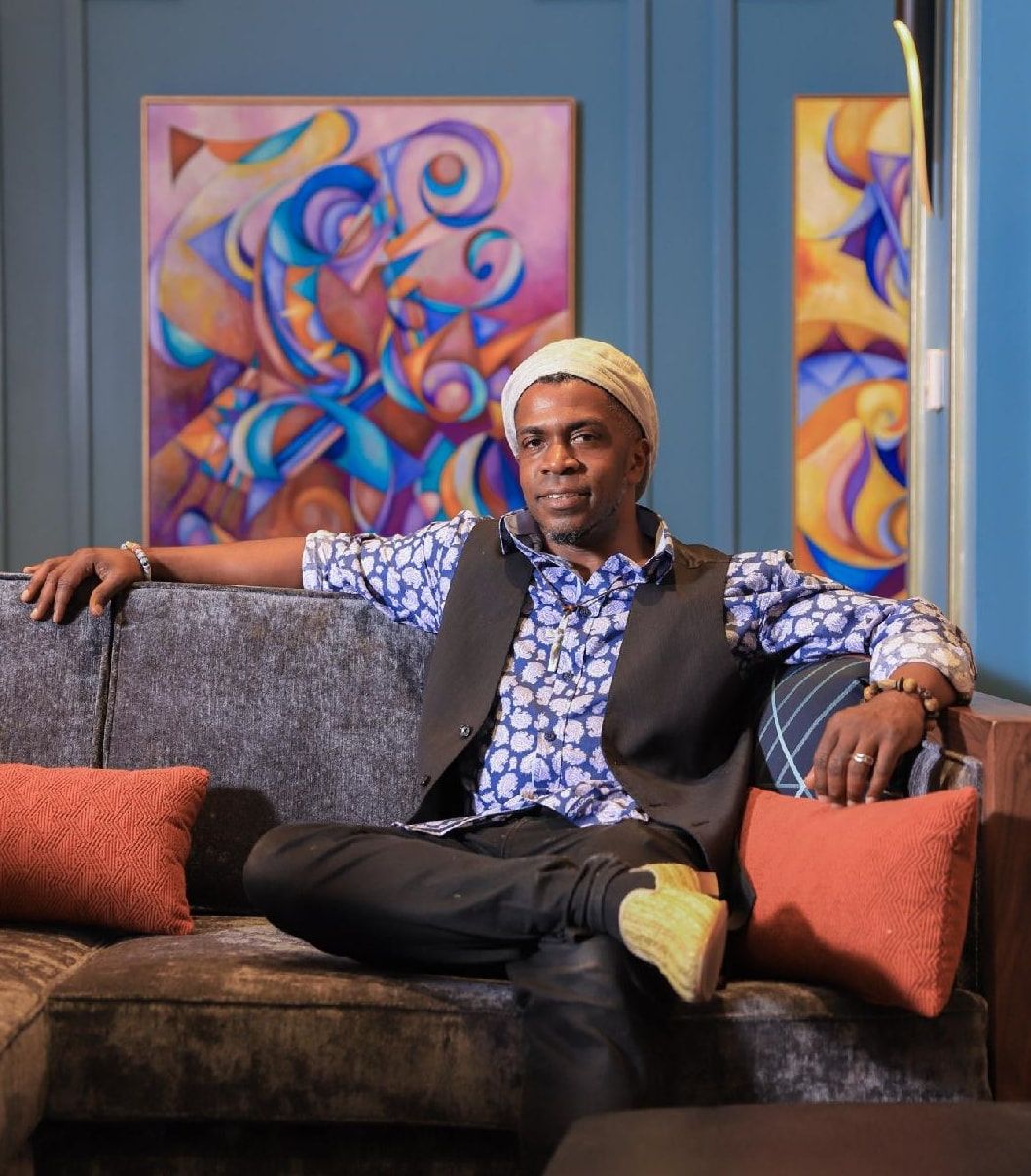|
Chip carved from walnut cigar boxes, with two drawers and lid. The pedestal box form was primarily found in upstate New York and created in the 1930s. Our example still has the New York cigar makers imprint on the inside of the boxes. Tramp Art wasn't produced only by itinerants but by the working man and is considered Folk Art. These pieces can be simple such as picture frames and small items, or complicated such as boxes with secret compartments and furniture. A generous donation by K. Richard B. Niehoff.
0 Comments
 Benn Pittman was born in England in 1822 and came to Cincinnati in the mid 1850's. He was a teacher at the Cincinnati Art Academy teaching decorative art and wood carving. One. of the premier Cincinnati Carvers, his work can be seen on furniture, woodwork, staircases, and small decorative items. His second wife was Adelaide Nourse, twin sister of painter Elizabeth Nourse. He was the founder of phonetic shorthand in America and one of the first shorthand reporters employed by the US Government. His most famous recorded case was the trial of the Lincoln conspirators. - Sylvia Outland, Art Curator  Plaster maquette (model for a larger sculpture) of elegant standing female by Wayne Green. Carlysle Wayne Green lived in the old schoolhouse on Utica Road just north of Old St. Rt. 122. (This is why we named her Utica as she didn't come to us with a name.) Green was an accomplished sculptor, and artist-in-residence and instructor of sculpture at Wilmington College. Educated at the Dayton Art Institute, his works can be found in public private collections including Wilmington College. - Sylvia Outland, Art Curator  "The paintings and drawings I create are intended to build bridges between the past, present, and future for both individuals and ALL groups of people, through stylistic ideas and expressions that crossover into many genres. Historically, my interest in art draws from cubism at the beginning of the 20th century. In contemporary terms, I have been noted to create images that relate to elements of urban architecture, highlighting areas of the city in which I lived and worked. My intention was to create a kind of architectonic lyricism. Much of my work still combines elements of cubism and deconstructionism, thus combining my interests in the musical composition and its relationship to my visual world. A change in rhythm can be compared to a change in line, weight, brushstroke, value, and pitch. Though my work has characteristics of abstract art, I encourage my viewers to reexamine material culture through my art; therefore, my abstraction is not totally non-objective. It is semi-abstraction. In recent years my work has increasingly transitioned into bolder, brighter color, as a shift in mood and tempo create drawings that originate as studies and become important to my process. The forms seem to grow like plants and flowers interweaving together in my vivid pictorial arena. While incorporating shapes that reference biomorphic forms in nature and internal human anatomy, I combine recognizable imagery placed in natural and man-made environments to create paintings that celebrate the enduring positive spirit of humanity through passionate color. This use of vibrant color adds a dreamy and playful quality to my work. As a child, I possessed the passion to put my interpretation of the world around me on paper, later forging those images into paintings. I want the child I once was to be represented in my paintings on a visceral level, and at the same time express the refinement of a maturing culmination. The personal becomes the universal. Art is an important way for me to communicate and subsequently build relationships with others. My work is a spiritual testimony to the visual experiences that arouse my senses. As I examine and interpret the world around me, I seek to share an exquisite interplay of subtle and bold." |
AuthorVarious staff and volunteer writers. Categories
All
Archives
June 2024
|
Email: [email protected]
Wchs Office/Harmon MuseumTues - Sat: 10am - 4pm
Year Round |
1795 BEEDLE cABINPhone for hours
Year Round |

 RSS Feed
RSS Feed





